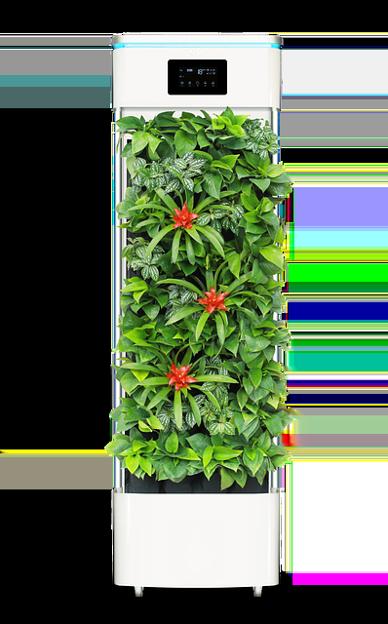Introduction
Air purifiers play a crucial role in improving indoor air quality, especially for those who suffer from allergies or respiratory issues. However, the efficiency of these devices largely depends on the filters. Knowing how often to change your air purifier filter is key to maintaining its performance and ensuring your air remains clean.

Understanding Different Air Purifier Filters
Understanding the types of air purifier filters is the first step in determining when they need to be changed. Air purifiers come with different filters, each with specific functions and replacement schedules.
HEPA Filters
High-Efficiency Particulate Air (HEPA) filters are designed to trap tiny airborne particles, including pollen, pet dander, and dust mites. They are highly effective but require regular replacement to maintain their efficiency.
Activated Carbon Filters
Activated carbon filters excel in removing odors, gases, and chemical vapors. They are often used in conjunction with HEPA filters for comprehensive air purification. Their effectiveness dwindles as they absorb more pollutants.
Pre-Filters
Pre-filters capture larger particles like hair and dust before they reach the primary filter. They are a critical first line of defense and can extend the life of other filters.
UV Light Filters
UV light filters use ultraviolet radiation to kill bacteria and viruses. They work alongside other filters and are particularly useful in environments where air quality is paramount.
Factors Influencing Filter Replacement Frequency
Several factors can influence how often you should replace your air purifier filter. Understanding these variables will help you develop a maintenance schedule that maximizes the effectiveness of your device.
Air Quality
If you live in an area with poor air quality, your filters will need more frequent replacement. High pollution levels, construction zones, or areas with a lot of allergens will quickly clog filters.
Usage Duration
The length of time your air purifier runs each day also determines how often the filters need changing. A filter used 24/7 will wear out faster than one used intermittently.
Manufacturer Recommendations
Manufacturers provide guidelines on how frequently filters should be replaced. These recommendations are based on average conditions and are a good starting point for setting your schedule.

General Guidelines for Changing Filters
Knowing when to change your air purifier filter can be tricky. Here are some general guidelines for different types of filters:
HEPA Filters
HEPA filters generally need to be replaced every 6 to 12 months. However, this varies with usage and air quality. Always check the manufacturer’s guidelines for exact timelines.
Activated Carbon Filters
Activated carbon filters typically need replacement every 3 to 6 months. Keep in mind that these filters are most effective when they are newer.
Pre-Filters
Pre-filters can be cleaned regularly and often need to be replaced every 2 to 4 months. Regular cleaning can extend their lifespan.
UV Light Filters
UV light filters have a more extended lifespan and usually need replacement every 12 months. Their effectiveness diminishes over time as the UV bulb loses its strength.

Signs That It’s Time to Replace Your Filter
Recognizing the signs of a worn-out filter helps ensure your air purifier operates efficiently.
Reduced Airflow
If you notice a decrease in airflow, it may be time to change the filter. A clogged filter restricts air movement, hampering the device’s performance.
Increased Allergy Symptoms
Heightened allergy symptoms can indicate that your air purifier filter is no longer effectively capturing allergens. Replacing the filter can provide immediate relief.
Visible Dirt and Dust on the Filter
A visible accumulation of dirt and dust signifies that the filter has absorbed as much as it can and needs to be replaced.
Tips for Extending the Life of Your Filters
Proper maintenance and smart usage can extend the life of your air purifier filters, saving you time and money.
Regular Maintenance
Regularly check and clean your air purifier and its filters. This includes dusting off the unit and ensuring it is free from blockages.
Cleaning Pre-Filters
Pre-filters can often be cleaned and reused. Check the manufacturer’s instructions for how to properly wash and care for these filters.
Using the Air Purifier Efficiently
Run your air purifier in areas where it’s most needed and during times when air quality is poorest. Don’t overload the unit by trying to purify too large a space.
How to Change Your Air Purifier Filter
Changing your air purifier filter is a straightforward process. Follow these steps to do it safely and effectively.
Step-by-Step Guide
- Turn off and unplug the air purifier.
- Open the filter compartment, usually on the back or bottom of the unit.
- Remove the old filter carefully. Avoid releasing dust accumulated on it.
- Insert the new filter according to the manufacturer’s instructions.
- Close the filter compartment and plug the unit back in.
Safety Precautions
Always consult the user manual for specific instructions and precautions. Handle filters with care to avoid inhaling dust and allergens.
Conclusion
Regularly changing your air purifier filter ensures optimal performance and cleaner air in your home. Different types of filters require varying replacement schedules, influenced by factors like air quality and usage. By understanding these, you can maintain your air purifier’s effectiveness and promote a healthier environment.
Frequently Asked Questions
How can I tell if my air purifier filter needs changing?
Look for signs like reduced airflow, increased allergy symptoms, and visible dirt on the filter. Following the manufacturer’s replacement guidelines can also help.
Can I clean and reuse my air purifier filter?
Some filters, like pre-filters, can be cleaned and reused. HEPA and activated carbon filters usually need to be replaced to maintain effectiveness.
What happens if I don’t change the air purifier filter on time?
Failing to change the filter can result in reduced air purifier efficiency and poorer air quality. It may also strain the unit, shortening its lifespan.
